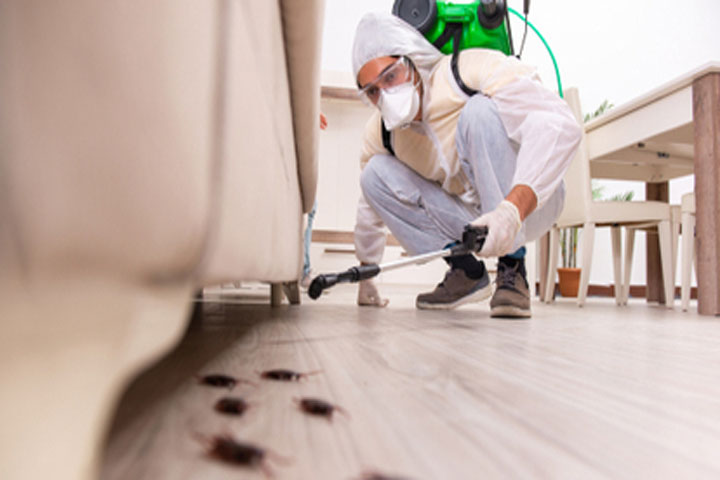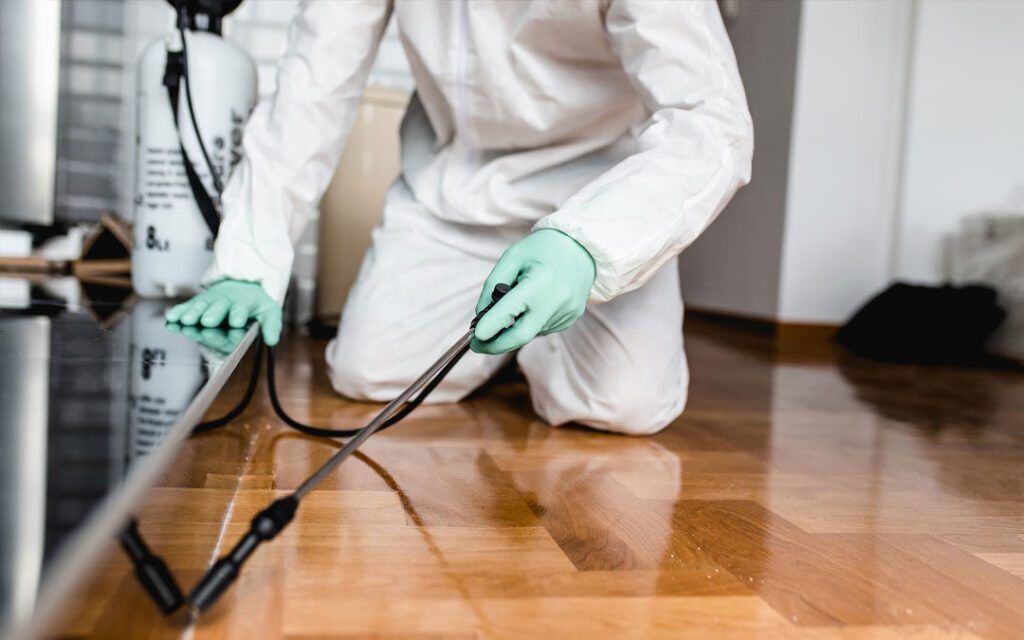A Comprehensive Overview to the Different Sorts Of Pest Control Methods
With the myriad of insect control approaches readily available, it can be overwhelming to find the most efficient remedy for a specific insect trouble. In this comprehensive guide, we will explore these various types of insect control methods, offering insights into their applications and advantages. By the end, you will certainly have a clearer understanding of which technique may be the finest fit for your bug control requirements.
Chemical Parasite Control Techniques

One common kind of chemical parasite control is pesticides. Pesticides target specific bugs, such as insects, termites, or ants, and can be used both inside your home and outdoors.
One more sort of chemical bug control is rodenticides. These are chemical materials developed to manage populations of rats, such as rats and mice. Rodenticides are generally utilized in bait kind, which attracts the rats and afterwards kills them after consumption. They are generally used in agricultural settings, as well as in domestic and industrial structures (Customized pest control solutions Chicago).
Herbicide, additionally known as herbicides, are another sort of chemical pest control method. Herbicides are designed to selectively kill undesirable plants, referred to as weeds, without creating damage to preferable plants. They are commonly utilized in agriculture, landscaping, and horticulture to manage the development of undesirable greenery.
While chemical bug control techniques can be highly efficient in getting rid of insects, it is essential to use them carefully and follow security guidelines. Overuse or misuse of chemical pesticides can have negative impacts on human health and wellness and the atmosphere. It is essential to use these techniques sensibly and consider alternate insect control methods whenever feasible.
Organic Insect Control Methods
Organic insect control methods entail the use of living organisms or natural compounds to handle and regulate pest populaces. Unlike chemical approaches, which typically rely upon artificial chemicals, organic control approaches utilize the natural enemies of insects to control their populaces. This approach is thought about even more environmentally pleasant and sustainable, as it reduces the use of damaging chemicals and reduces the risk of pesticide resistance.
One widely used organic pest control technique is the intro of all-natural predators or bloodsuckers. Ladybugs are introduced to regulate aphids, while particular wasp species are released to target caterpillars. These killers and parasites feed on insects, lowering their numbers and preventing invasions.
Another organic control method is using pathogens. Specific microorganisms, infections, and fungi can be employed to contaminate and kill particular insects. The bacterium Bacillus thuringiensis is frequently utilized to control caterpillars, as it generates contaminants that are deadly to these pests.
Biological control methods can also include making use of scents or all-natural substances that disrupt the breeding patterns of parasites. By interfering with their reproduction, these techniques assist to reduce pest populations with time.
While organic parasite control approaches are generally effective, they might require longer durations to achieve desired outcomes contrasted to chemical techniques. Additionally, cautious factor to consider should be offered to the choice and release of all-natural enemies to stop unintentional damage to helpful organisms or communities.
Physical Insect Control Methods
To effectively take care of and manage pest populations, alternate insect control read the article methods called physical parasite control methods are employed. These methods include the usage of physical barriers, traps, or gadgets to stop bugs from accessing or damaging building. One usual physical parasite control approach is using screens or nets to keep bugs out of buildings or yards. These displays are usually made of great mesh material that permits air flow while protecting against parasites from entering. Another physical pest control approach is the installment of fencings or wall surfaces to maintain larger parasites, such as deer or bunnies, out of gardens or agricultural areas. These barriers literally block the bugs' access to the location, minimizing the capacity for damage. Additionally, catches and gadgets can be utilized to catch or drive away pests. For example, sticky traps can be placed in areas where pests are a trouble, and the insects become stuck to the adhesive surface. Ultrasonic tools can likewise be utilized to send out high-frequency audios that are undesirable to bugs, triggering them to leave the location. Physical bug control approaches are an environmentally friendly alternative to chemical pesticides, as they do not rely upon the use of damaging chemicals.
All-natural Bug Control Techniques
Natural parasite control techniques supply a sustainable and environmentally friendly method to handling and getting rid of bugs. These methods focus on the use of natural compounds and biological representatives, reducing the demand for chemical pesticides that can hurt the setting and human health. One of the most common all-natural insect control methods is organic control. This entails introducing all-natural predators or bloodsuckers to prey on or parasitize the bugs. Ladybugs are typically presented to yards to manage aphid populations. Another all-natural technique is making use of repellents obtained from plants. Particular plants, such as marigolds, lavender, and peppermint, discharge scents that push back parasites like insects, flies, and ants. Furthermore, cultural control techniques can be employed to stop and manage pest infestations. This includes appropriate sanitation, routine upkeep, and advertising biodiversity in the yard. Rotating crops, removing garden particles, and encouraging all-natural predators can assist avoid the accumulation of insects. By taking on these natural bug control methods, individuals and areas can successfully manage insects while minimizing the unfavorable effect on see the environment and human wellness.
Integrated Insect Administration (IPM)
Integrated Parasite Management (IPM) is a comprehensive and methodical approach to pest control that incorporates different strategies and strategies to successfully take care of bugs while reducing the usage of chemical pesticides. IPM intends to keep bug populaces listed below the economic injury degree by using a combination of cultural, biological, and chemical control techniques.
Cultural control approaches entail changing the setting to make it less positive for bugs. This can consist of practices such as crop turning, correct sanitation, Going Here and using resistant plant ranges. By creating undesirable problems for parasites, cultural control methods can substantially decrease insect populations.

Chemical control methods are used as a last hotel in IPM. They include the targeted and cautious usage of pesticides to handle insect populations. Unlike traditional insect control approaches, IPM intends to reduce the use of chemical pesticides by employing different techniques.
Integrated Pest Management (IPM) is an aggressive strategy that concentrates on lasting pest monitoring as opposed to depending exclusively on responsive measures. By incorporating several control approaches, IPM gives a much more lasting and ecologically pleasant method to pest control.
Final Thought
It reviewed chemical, biological, physical, and natural bug control methods, as well as the incorporated insect administration approach. By comprehending these different approaches, individuals can make informed decisions on which bug control method is most suitable for their particular requirements and choices.